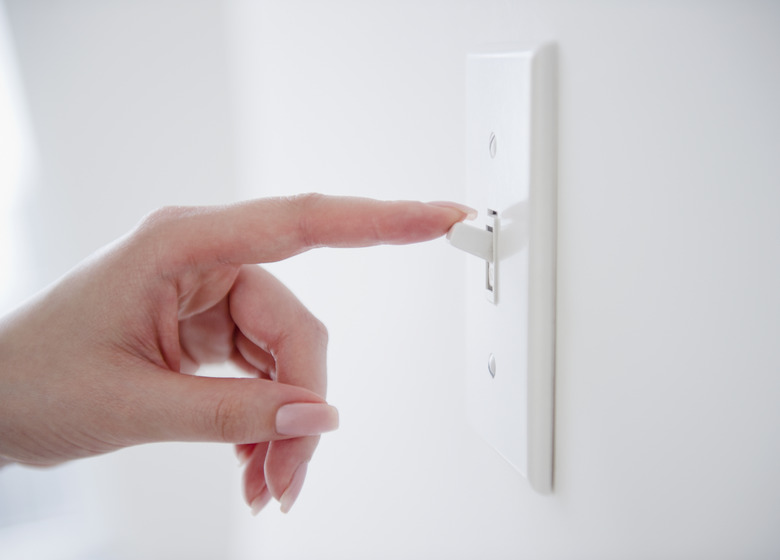What Gauge Wire Should I Use For Lights And Outlets?
When wiring a house, it's always a good idea to put lights and outlets on separate circuits, which guarantees that if the outlet circuit fails, you still have light. As long as you don't put too many lights on the light circuit, you can usually control that circuit with a 15-amp breaker, as well as wire it with a 14-gauge wire. On the other hand, an outlet circuit controlled by a 20-amp breaker requires a 12-gauge wire.
12-Gauge Vs 14-Gauge Wire
Wire gauge is a measure of diameter. A larger wire, by virtue of its larger cross-sectional area, generates less resistive heat than a smaller one and can handle more current without overheating. Larger gauge numbers refer to smaller-diameter wires, because the concept of gauge is derived from the number of wires you can fit through a standard opening. A standard 12-gauge copper wire has a diameter of 2.05 mm, while the diameter of 14-gauge copper wire is only 1.63 mm.
If you're wiring a circuit on which there are both lights and outlets, or you just aren't sure which wire gauge to use, you can't go wrong by choosing a 12-gauge wire. It's not quite as flexible as a 14-gauge wire, and it costs a bit more, but it's always a safe choice on a 15- or 20-amp circuit. As far as Ask the Builder is concerned, it isn't a bad idea to forget a 14-gauge wire altogether and wire your entire house with a 12-gauge wire.
Selecting Wire Gauge for Outlets
As the wire size amp rating chart at Cerrowire states, under normal household temperature conditions, the maximum current rating for a 14-gauge wire is 15 amps, while that for a 12-gauge wire is 20 amps. It's OK to wire a 15-amp light circuit with a 14-gauge wire to save a bit of money and make the wiring job a bit easier. But the decision between 12- or 14-gauge wire for outlets isn't always as straightforward for a couple of reasons: some appliances draw more than their running current when they start up, and circuits with many outlets can experience a significant voltage drop if a large number of outlets are in use at the same time.
You can avoid both problems by wiring the outlet circuit with a 12-gauge wire, which is optional if the controlling breaker and all the outlets are rated for 15 amps. If the breaker is rated for 20-amps, however, you don't have a choice, because the electrical code never permits you to use a 14-gauge wire on 20-amp circuit. You must also use a 12-gauge wire when connecting an outlet rated for 20 amps, as many GFCI outlets are, even if the appliances you plug in are rated for only 15 amps.
Wire Size for 240-Volt Outlets
Most houses have one or more 240-volt outlets to service an electric dryer, stove or water heater. The wire gauge depends on the current rating of the outlet and of the breaker, which, according to code, must be the same.
The minimum wire size for a 30-amp, 240-volt circuit is 10-gauge, but to prevent poor performance because of voltage drop, you should consider upgrading to 8-gauge if the outlet is far from the panel. For a 50-amp circuit, you need a 6-gauge wire at a minimum.
